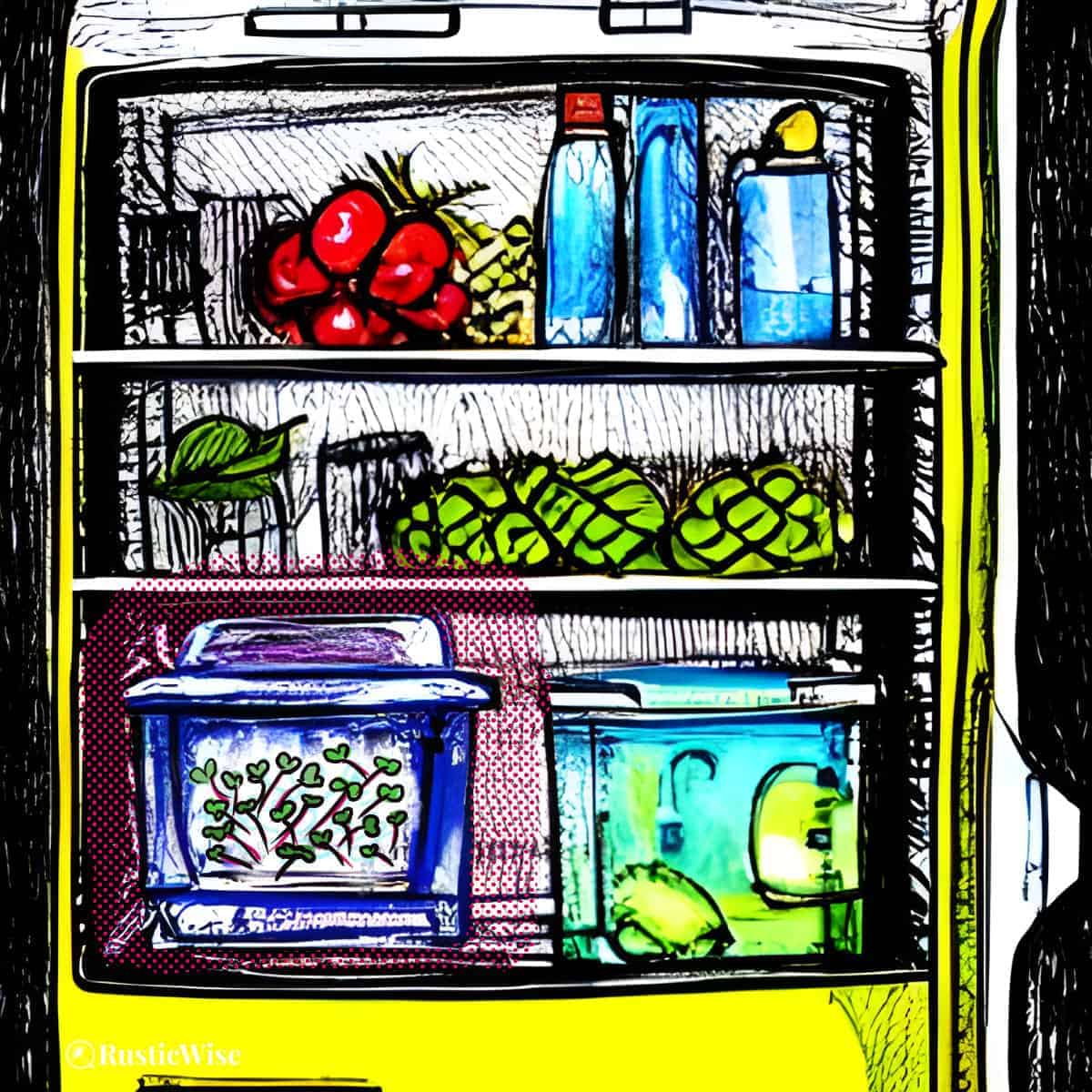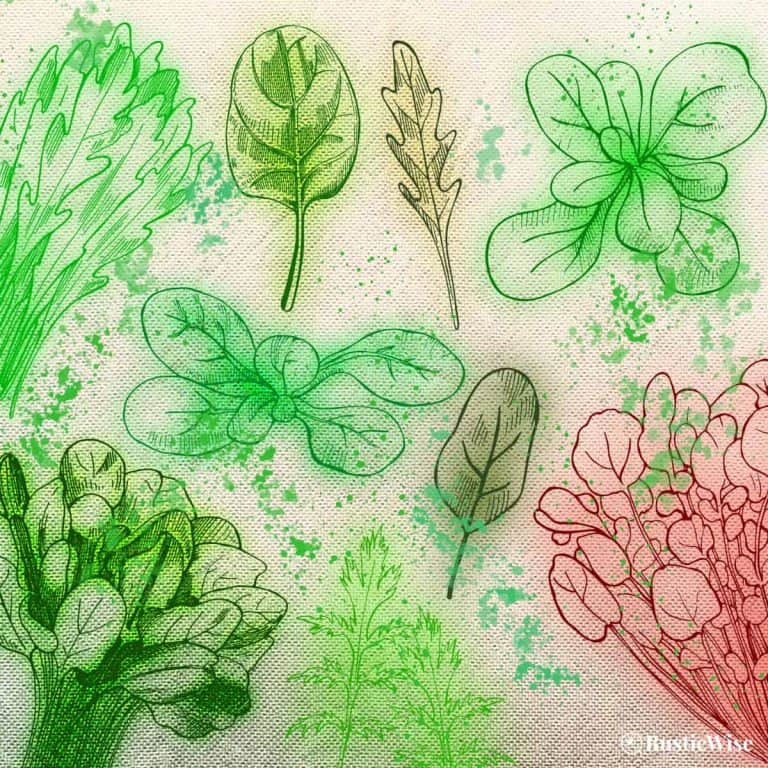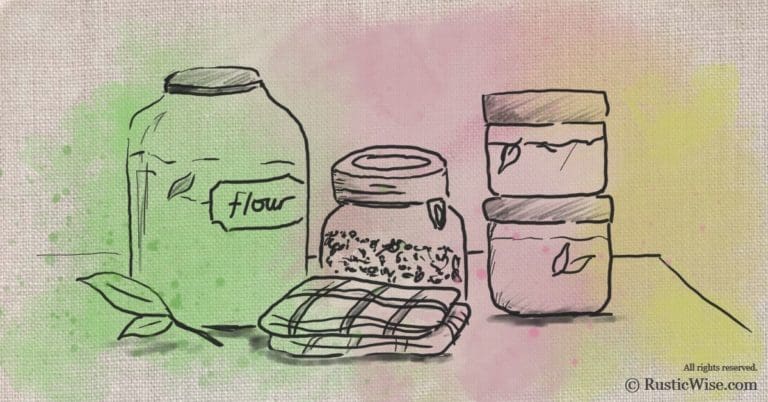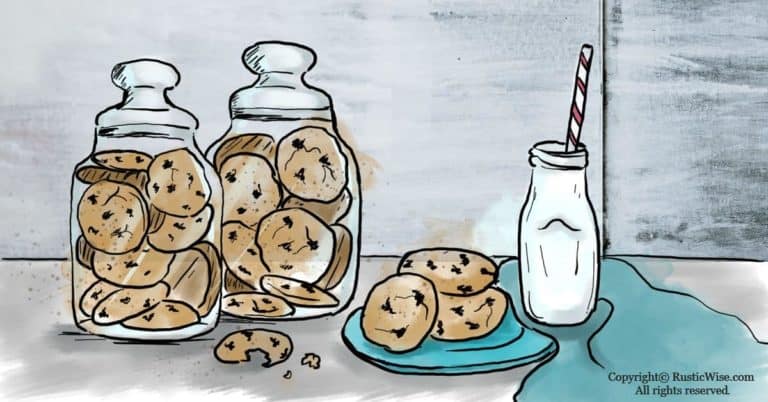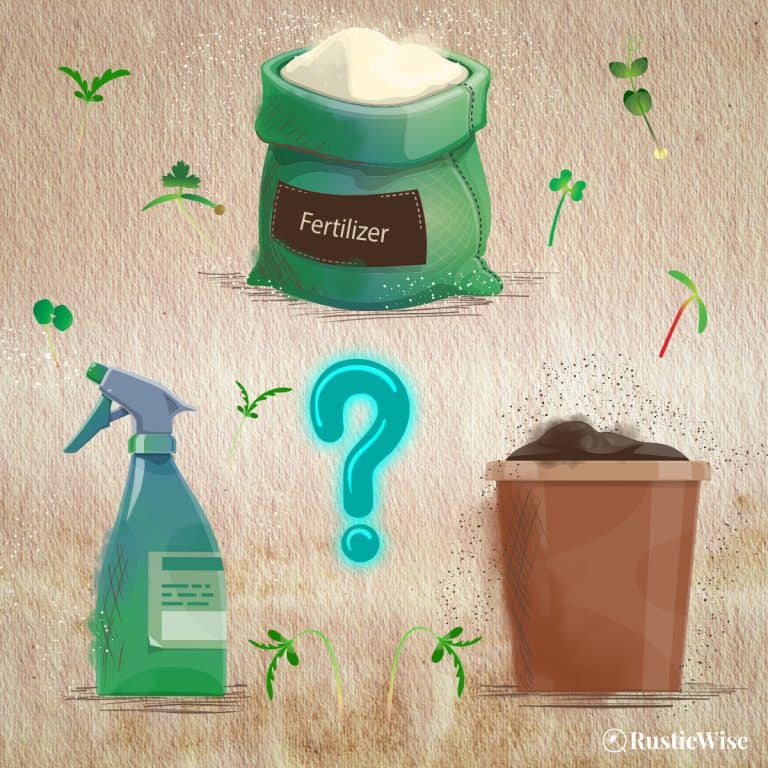How Long Do Microgreens Last in the Fridge? 5 Factors That Affect Shelf Life
You’ve just purchased some store-bought microgreens (or harvested your own homegrown microgreens) and want to store them for a few days before you use them.
How long do microgreens last in the fridge? Most varieties of microgreens will last about 1 to 2 weeks in the fridge if properly stored. Sturdier and hardier micros such as pea shoots or sunflower microgreens may last 2 to 3 weeks with proper storage. More delicate varieties like arugula or mustard greens may only last less than a week as they dry out quickly.
And of course, let’s not forget to mention the importance of proper storage.
Let’s look at a few key factors that affect the shelf life of microgreens and ways you can extend the longevity of your microgreens.
Microgreens at a glance
Microgreens are essentially tiny seedlings that have just unfurled their seed leaves (aka cotyledons) before harvesting. Sometimes we wait until the first set of true leaves appear before harvesting above the soil line.
Any plant at this young stage of growth is fragile, both before, during, and especially after harvesting. Most micros are only between 1 and 3 inches tall (3 and 8 centimeters). So it makes sense that these tiny greens require a bit of TLC during storage.
But all this fuss is well worth it. Micros have a much shorter growth cycle than regular vegetables and herbs. They’re also more nutritious than their mature counterparts with a higher concentration of vitamins, minerals and phytochemicals. Plus, you can grow them indoors all year round!
Just to be clear, this article is about the shelf life of microgreens, not sprouts. If you need a quick refresher on the difference between sprouts and micros, sprouts are germinated seeds that we eat in their entirety: seed, root, and shoot. Sprouts are grown without any soil (or growing medium), and in low-light conditions.
Micros, on the other hand, require plenty of sunlight. They require a growing environment in shallow trays filled with soil, or a soilless medium.
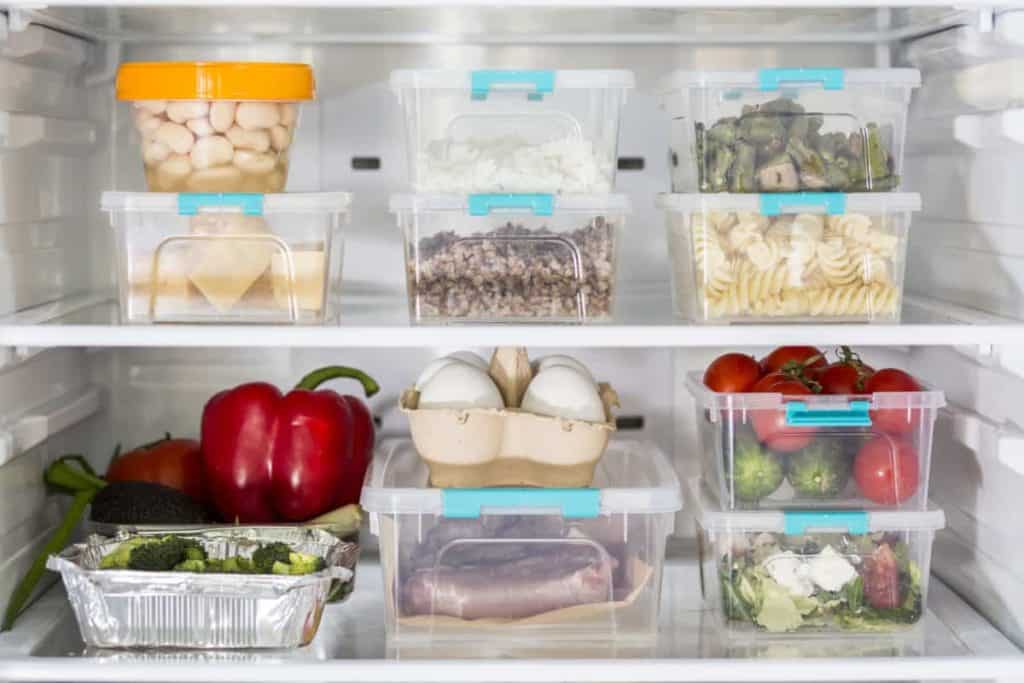
Do you really need to refrigerate microgreens?
Yes, absolutely! Just as you wouldn’t dream of leaving a head of lettuce on the countertop for hours, you need to treat your micros similarly to other leafy greens.
Microgreens are a unique produce that is harvested at the earliest stages of the plant’s growth. Similar to their full-grown counterparts, we must keep microgreens cool and dark in order to keep their color, flavor, and nutrients. The leaves are extremely delicate and will wilt if exposed to heat or direct sunlight for too long.
Keep them cool. The cooler the better, so long as they don’t freeze.
According to Pennsylvania State University, storing freshly harvested microgreens in dark, cool conditions at 41 degrees Fahrenheit (5 degrees Celsius) can extend shelf life to 10 and 14 days. Compare this to only 2 to 4 days when stored in ambient temperatures.¹
How long do microgreens last in the fridge? Here’s a closer look
While there isn’t a lot of literature on this subject, most types of microgreens after harvest will last for 1 to 2 weeks in the fridge.
Of course, shelf life largely depends on if the microgreens are properly harvested, how quickly they are cooled after harvesting, and the type of container they are kept in.
As you know, no two microgreens are the same. Some vary greatly in size and moisture retention—factors that can affect how long they stay fresh before they go bad.
Here’s a general guideline on how long micros keep in the fridge, depending on the type.
| Types of MicrogreensShelf LifeLarge microgreens such as sunflower and pea shootsUp to 2 to 3 weeksMedium-sized common varieties such as broccoli, cabbage, kale, and radish1 to 2 weeksSmall or more delicate microgreens such as amaranth, arugula and mustard greensLess than a week |
|---|
Some varieties of micros grow larger than most with broader leaves and longer stems. Two that come to mind are the popular sunflower microgreens and pea shoots. These shoots are more hardy than typical varieties of micros and enjoy a longer shelf life—between 2 and 3 weeks.
More average sized types and common microgreens include broccoli, cabbage, kale, and radish microgreens. Not exactly dainty, but not as hardy as sunflower shoots and peas, these straddle the middle ground in terms of longevity after harvest. These can last around 1 to 2 weeks after harvesting.
And finally, there are some types of micros with a more delicate structure that are more prone to wilting or drying out. They have a shorter shelf life.
These microgreens are more susceptible to temperature fluctuations and humidity changes. Excess moisture can cause these to go moldy. Too little moisture causes them to dry out. Examples include arugula, amaranth, and mustard greens. Use these up in less than 1 week for optimal freshness.
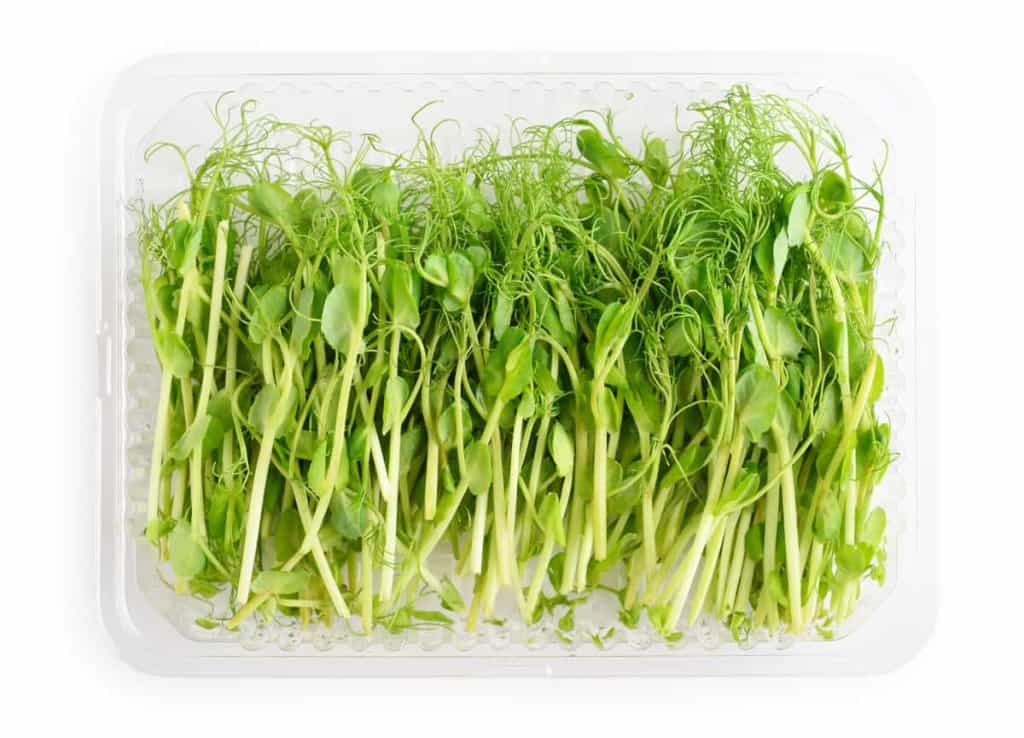
Credit: Deposit Photos
5 Key factors that affect the shelf life of microgreens
There are many elements that can help or hinder the lifespan of these tiny greens, post-harvest. The following list is by no means exhaustive, but focuses on the key aspects that are within your control if you grow microgreens at home (or within the control of a micros supplier).
When storing micros, or any type of fresh produce, we always try to reduce respiration rates and senescence (the natural cellular aging in plants). Plus, limiting light exposure is also key.
The shelf life of microgreens is affected by the following key factors:
- Harvesting and handling
- Moisture
- Temperature
- Humidity level
- Packaging and storage
1: Harvesting and handling
As you know, microgreens are fragile little things. The thin stems and cellular structures are easily damaged if not handled with care. This is important to remember during harvesting.
Whether you prefer to use a sharp pair of scissors, electric cutters, or a razor-sharp knife, it’s important to use an instrument that will make a clean cut.
Jagged cuts, or failing to tread lightly during harvest time will cause bruises or damage to your tray of microgreens, which can shorten shelf life. And nobody wants that!
2: Moisture
Similar to sprouts and other leafy vegetables, micros don’t like excess water during storage.
If you want to maximize shelf life, it’s best wait at least 12 to 24 hours from the last watering before harvesting micros. This allows the greens to soak up any water and lets any moisture on leaves and stems dry off.
Use a salad spinner, or pat dry between paper towels or a clean cloth to wick away excess moisture.
Tip: Some people like to wash their micros before storing in the fridge, while others don’t wash their homegrown micros at all. I like to just give my micros a quick rinse before eating so I can store them dry.
3: Temperature
As mentioned earlier, it’s important to keep microgreens in cool and dark conditions. It’s important to store microgreens after harvest in the fridge.
The USDA recommends temperatures of 40 degrees Fahrenheit (4 degrees Celsius) or lower as an optimal fridge temperature.²
If you’re buying a clamshell of micros from the store, stick them in the fridge as soon as you can. If you’re harvesting your own micros, refrigerate them immediately.
Tip: For a longer shelf life, keep the storage temperature consistent. Any temperature fluctuations will result in condensation and excess moisture buildup which will shorten the lifespan of any microgreen.
4: Humidity level
Most vegetables and leafy greens enjoy high humidity, while fruits do not.
If your fridge has a crisper drawer, it likely has a switch labelled Fruits or Vegetables. Switch it to Vegetables to create a high humidity storage box for your microgreens. Remember to remove any fruits in this drawer as they won’t like the humidity.
5: Packaging and storage
Microgreens are extremely delicate plants, so you want to treat them with care.
If you’re planning on eating your micros in the next day or two, then you can simply stash them in a plastic Tupperware container with lid loosely fitted, or an open ziploc bag. An airtight container is NOT recommended as micros require a bit of airflow.
Successful longer term storage strikes a balance between airflow and retaining a bit of humidity to prevent them from drying out. Microgreens still need to breathe post-harvest.
Food scientists from the Agricultural Research Service of the USDA studied various storage methods on freshly cut buckwheat microgreens. They could extend their shelf life by keeping them cool at 41 degrees Fahrenheit (5 degrees Celsius), and bumping up CO₂ and lowering O₂. These used special “films” which created optimal conditions allowed buckwheat micros to stay fresh for up to 14 days.³
Tip: Want to keep your microgreens fresh? If you find your microgreens drying out, loosely wrap them around a damp paper towel. If you notice condensation in your microgreen storage, place a dry paper towel in the container to absorb extra moisture.
👉 If you like this post, see our Complete Guide to Growing Microgreens at Home. 🌱
Would you like more timeless tips via email?
Fun tips to help you live an independent, self-sustaining lifestyle. Opt-out at any time.


References
- Pennsylvania State University Extension, Growing Microgreens, https://extension.psu.edu/growing-microgreens. Accessed November 2022.
- USDA Food Safety and Inspection Service, Refrigeration & Food Safety, https://www.fsis.usda.gov/food-safety/safe-food-handling-and-preparation/food-safety-basics/refrigeration. Accessed November 2022.
- USDA, AgResearch Magazine, “Specialty Greens Pack a Nutritional Punch.” https://agresearchmag.ars.usda.gov/2014/jan/greens. Accessed November 2020.

Author: Josh Tesolin
Josh is co-founder of RusticWise. When he’s not tinkering in the garden, or fixing something around the house, you can find him working on a vast array of random side projects.

